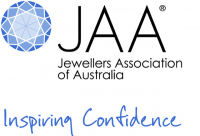BUYING THE RIGHT DIAMOND
Rest assured, you won’t need to spend a fortune to find a Diamond that’s right for you. Understanding the variable nature of each diamond is the first step – quality and furthermore, price can differ dramatically. Understand each Diamond’s characteristics are key to contemplating it’s value. Bill Hicks Jewellery Design works with ALL budgets. We are dedicated to finding the perfect stone for your design and your budget.
When buying online, you can feel confident that we have done all the hard work for you. Your diamond will be hand picked by our in house qualified gemmologists ensuring the perfect diamond for your requirements.
THE SHAPE OF A DIAMOND
The traditional diamond shape is the round brilliant cut. It features 58 facets, or small flat polished planes, designed to yield the maximum amount of light to be reflected back to the viewer. A well-cut diamond is symmetrical and capable of reflecting nearly all the light that enters it, thus resulting in maximum brilliance compared to other diamond shapes.
Fancy cuts refer to all other cuts of diamond apart from the traditional round brilliant cut. Princess, cushion and asscher cuts are becoming increasingly popular, especially for engagement in rings. Other fancy cut diamonds include marquise, emerald
THE FOUR C’s
Whilst two diamonds may at first glance look alike, the truth is that they are very different. Although they may be of equal size, they may have very unequal values.
There are four characteristics used around the world that will assist you when buying a diamond. They are known as the 4 Cs- cut, colour, clarity and carat weight. It’s the combination of these four factors that help determine the value of a diamond. Within these 4 C’s there are also sliding parameters which influence the price. The 4 C’s are intended as a guide only. It is important to remember that you wear the diamond NOT the certificate.
Cut and Shape
People often confuse the cut with the shape of the diamond. The cut of a diamond refers not only to its shape but also its ‘cut quality’.
The ‘cut quality’ refers to the arrangement of the diamond’s facets and the quality of the cut of the diamond – proportions, symmetry, polish and ultimately the way light performs within the diamond.
When cut to good proportions, the diamond is better able to handle light, creating more fire, brilliance and sparkle. In turn, it commands a higher value. When you are choosing your diamond, just hold it up and make sure you like the way the light dances around it.
When a diamond is cut with ideal proportions the light is returned out of the top of the diamond.If it is cut too shallow, light leaks out of the bottom; too deep and it escapes out of the side.
Clarity
Most diamonds contain tiny inclusions that are like nature’s fingerprints, making each diamond unique. Even though they neither mar its beauty nor endanger its durability, the fewer and smaller the inclusions are, the less they will interfere with the passage of light through the diamond. So, the more the diamond will sparkle. A diamond that is free of both inclusions and surface blemishes is particularly rare and therefore more valuable.
The clarity of a Diamond can range from Totally Flawless to Imperfect. Clarity of the Diamond is more important in the context of Colourless Diamonds as it pertains to how easily the light enters and reflects around the Diamond when a diamonds has higher Clarity, light moves more efficiently around the Diamond. When considering coloured Diamonds, clarity becomes less important.
Colour
Diamonds come in a range of natural colours from totally colourless white diamonds to black. Diamonds with no trace of colour are extremely rare and the closer they are to having no colour the more rare and valuable they are. Stones are graded by colour and given designations dependant upon how far they deviate from purest white.
Also rare, are diamonds with strong pure colour, called fancies. They are valued for their depth of colour, as white diamonds are valued for their lack of colour. Amongst the most valuable of coloured diamonds are pink diamonds from Australia ‘s own Argyle Mine in Western Australia.
Carat

The weight of a diamond is measured in carats and one carat weighs one-fifth of a gram. The word is derived from the carob seeds that were used to balance scales in ancient times. One carat is divided into 100 points so that a diamond of 0.75 carat weight is 75 points.
Larger diamonds are rarer. Fine quality can be found in diamonds of all shapes and sizes. It’s important to find a diamond size that suits you and the style of jewellery you are buying or having made. The cut and measurement of a diamond along with the setting can make a diamond appear bigger (or smaller) than its actual weight. Talk to us about how to find the right diamond and setting to optimise the beauty of the stone.
DIAMOND CERTIFICATES
A diamond certificate is a single report pertaining to a particular diamond. It is like a birth certificate which grades the diamond for it’s Cut, Carat, Colour and Clarity characteristics. Other features of the diamond including, cut grade, polish grade, symmetry grade and any fluorescence are also noted on the certificate. Fancy cut diamonds do not include a cut grade on their certificate.
We recommended purchasing a diamond with a diamond certificate. Many round brilliant cut diamonds now come with a laser inscription on the girdle of the diamond (readable under 10x magnification). This provides the owner with extra assurance that the diamond matches it’s certificate and is authentic.
The grading process of a diamond ensures the diamond is graded and tested under laboratory conditions by specially qualified Gemmologists and Diamond Graders.



